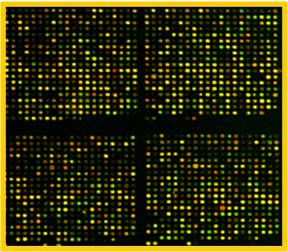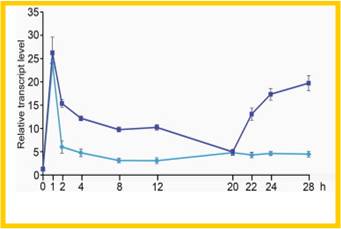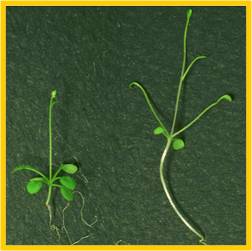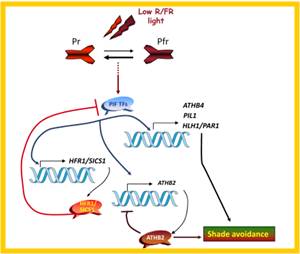
Fax :+390649912500
giovanna.sessa@uniroma1.it
Researcher
National Research Council
Istitute of Molecular Biology and Pathology CNR
Universit\u00e0 \Sapienza\ P.le A. Moro, 5 00185 Roma
The aim of my research activity is to study the role and function of HD-Zip II transcription factors in shoot and root development in the model plant Arabidopsis thaliana. In particular my interest is mainly focused on two projects Decipher the mechanism of action of HD-Zip II transcription factors Plants’ lifelong growth and organ formation are dependent on the activity of pluripotent stem cells. In the root apical meristem (RAM) of Arabidopsis, stem cells surround a small group of less active cells, the Quiescent Center (QC). The QC, together with its surrounding stem cells, forms the root stem cell niche. The regulation of columella stem cell (CSC) activity has been intensively studied and a key role of auxin and several transcription factors has been identified. However, more insights are needed to unravel the network of transcription factors controlling CSC activity. We found that ATHB2, ATHB4 and HAT3 HD-Zip II transcription factors, known to play a crucial role in apical embryo development, are required for RAM organization and CSC maintenance. The aim of the project is to investigate how ATHB2, ATHB4 and HAT3 interact with known regulatory molecules involved in the control of CSC activity using genetic, molecular and phenotypic approaches.
|
1-Ciolfi A., Sessa G., Sassi M., Possenti M., Salvucci S., Carabelli M., Morelli G., Ruberti I. (2013). Dynamics of the Shade-Avoidance Response in Arabidopsis Plant Physiology 163 (1), 331-353.
3-Cifuentes-Esquivel N., Bou-Torrent J., Galstyan A., Gallemi M., Sessa G., Martret M.S., Roig-Villanova I., Ruberti I., Martinez-Garcia J.F. (2013). The bHLH proteins BEE and BIM positively modulate the shade avoidance syndrome in Arabidopsis seedlings Plant Journal 75 (6), 989-1002. 4-Ruberti I., Sessa G., Ciolfi A., Possenti M., Carabelli M., Morelli G., (2011) Plant adaptation to dynamically changing environment: The shade avoidance response. Biotechnol Adv. doi:10.1016/j.biotechadv.2011.08.014. 5-Ciarbelli AR., Ciolfi A., Salvucci S., Ruzza V., Possenti M., Carabelli M., Fruscalzo A., Sessa G., Morelli G., Ruberti I. (2008). The Arabidopsis homeodomain-leucine zipper II gene family: diversity and redundancy. Plant Mol Biol. 68, 465-78. 6-Carabelli M, Possenti M, Sessa G, Ciolfi A, Sassi M, Morelli G, Ruberti I. (2007). Canopy shade causes a rapid and transient arrest in leaf development through auxin-induced cytokinin oxidase activity. Genes & Development, vol. 21; p. 1863-1868 7-Sessa G., Carabelli M., Sassi M., Ciolfi A., Possenti M., Mittempergher F., Becker J., Morelli G., Ruberti I. (2005). A dynamic balance between gene activation and repression regulates the shade avoidance response in Arabidopsis. Genes & Dev 19 (23), 2811-2815. 8-Steindler C., Matteucci A., Sessa G., Weimar T., Ohgishi M., Aoyama T., Morelli G., Ruberti I. (1999). Shade avoidance responses are mediated by the ATHB-2 HD-Zip protein, a negative regulator of gene expression Development 126 (19), 4235-4245. 9-Sessa G., Steindler C., Morelli G., Ruberti I. (1998). The Arabidopsis Athb-8, -9 and -14 genes are members of a small gene family coding for highly related HD-ZIP proteins. Plant Mol. Biol. 38 (4), 609-622. 10-Sessa G., Morelli G., Ruberti I. (1997). DNA-binding specificity of the homeodomain-leucine zipper domain. J. Mol. Biol. 274 (3), 303-309. 11-Baima S., Nobili F., Sessa G., Lucchetti S., Ruberti I., Morelli G. (1995). The expression of the Athb-8 homeobox gene is restricted to provascular cells in Arabidopsis thaliana. Development 121 (12), 4171-4182. 12-Sessa G., Morelli G., Ruberti I. (1993). The Athb-1 and Athb-2 HD-Zip domains homodimerize forming complexes of different DNA binding specificities. EMBO J. 12 (9), 3507-3517. 13-Ruberti I., Sessa G., Lucchetti S., Morelli G. (1991). A novel class of plant proteins containing a homeodomain with a closely linked leucine zipper motif. EMBO J. 10 (7), 1787-1791. |
Giovanna Sessa obtained the Degree in Biological Sciences in 1990 at the University of Rome Sapienza and then, in 1996, achieved her PhD in Genetics and Molecular Biology at the same university. In the periods 1991-1993 and 1997-1999 she performed research activity as a fellow of the National Research Council at the Nucleic Acids Research Centre. In the years 2000 and 2001 she continued her activity as a young researcher at the same institution. Since January 2002, she has a permanent position as researcher of the National Research Council and works at the Institute of Molecular Biology and Pathology in Rome.
Awards 1991: “Fondazione Istituto Pasteur-Fondazione Cenci-Bolognetti” Award for best experimental thesis in the field of pasteurian disciplines. 1997: “Fondazione Istituto Pasteur-Fondazione Cenci-Bolognetti” Award for best PhD thesis in the field of pasteurian disciplines. |







